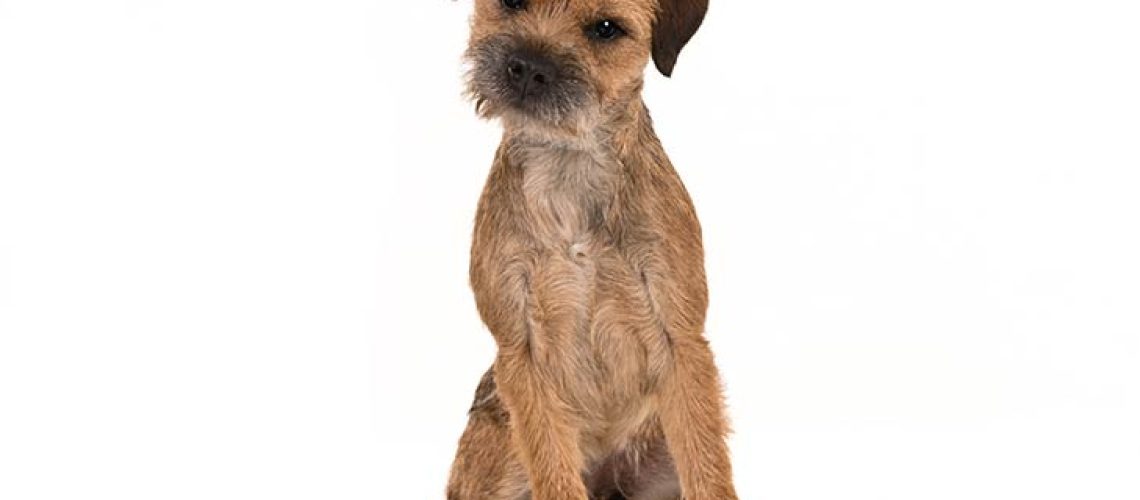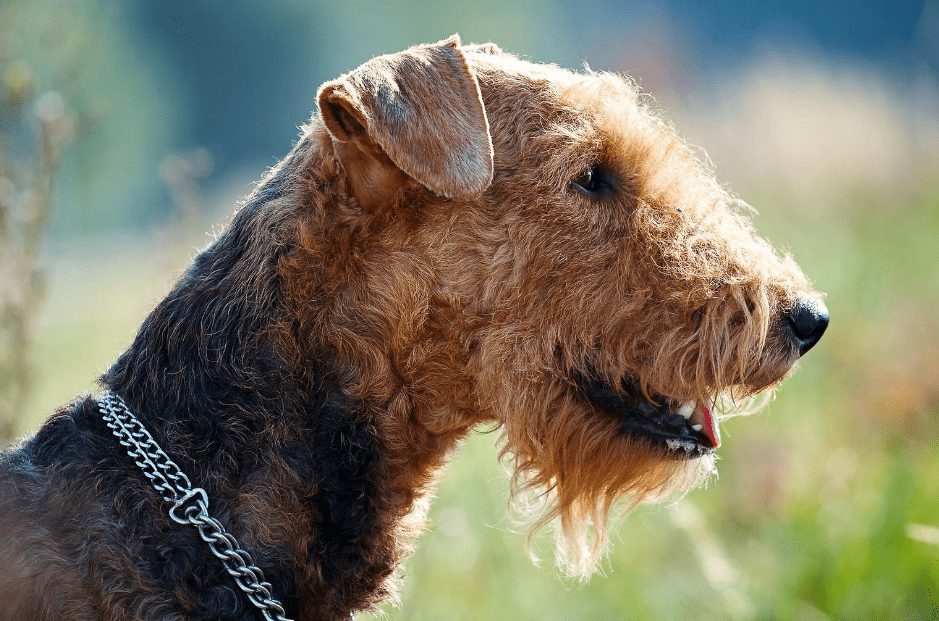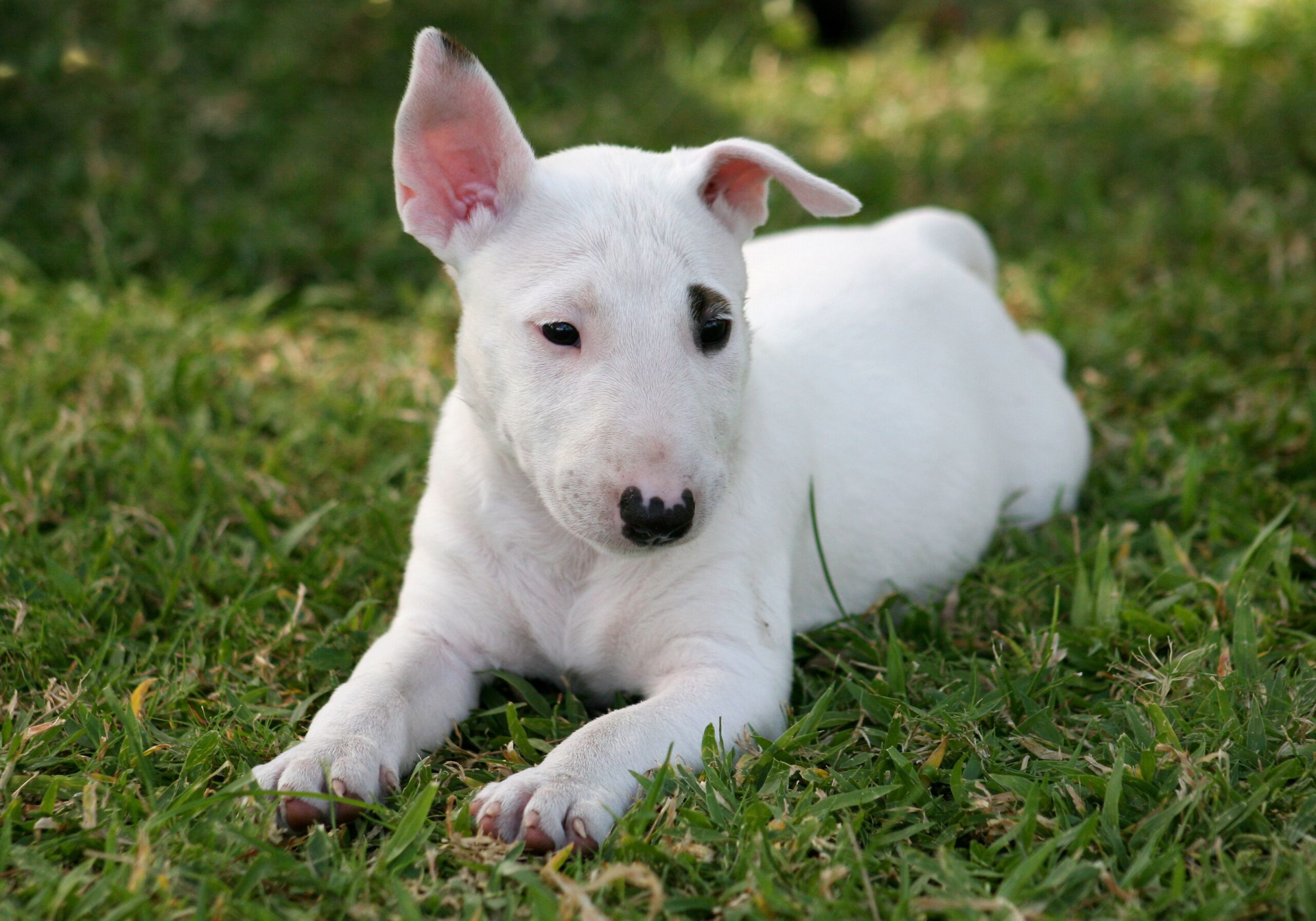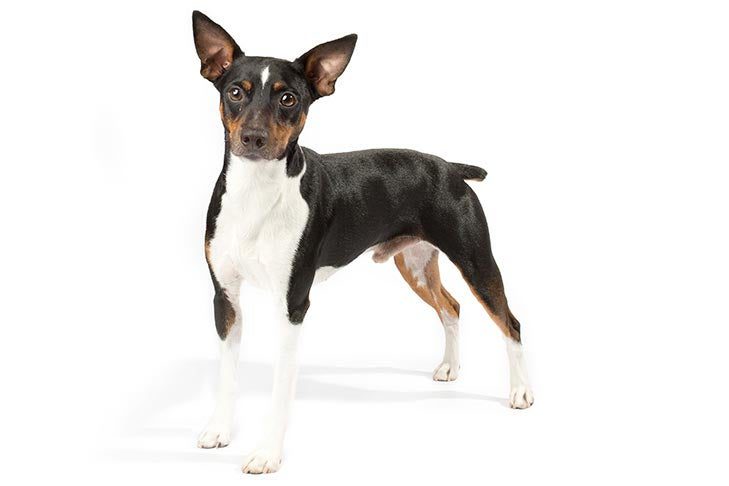Key Takeaways:
- Border Terriers are small, energetic dogs known for their intelligence and agility.
- They have a wiry, weather-resistant coat that requires regular grooming to prevent matting.
- Border Terriers are highly trainable and excel in obedience and agility competitions.
- They have a strong prey drive and may chase small animals, so they should be supervised during outdoor activities.
- Regular exercise and mental stimulation are essential for Border Terriers to prevent boredom and destructive behavior.
Are you a dog lover? If so, then get ready to dive into the fascinating world of Border Terriers! This captivating breed is known for its charming personality and adorable looks. By understanding the characteristics and care of Border Terriers, you'll not only gain valuable knowledge about this lovable breed but also discover how to provide them with the best possible care. Whether you're considering getting a Border Terrier as a pet or simply want to learn more about these delightful dogs, this topic will provide you with all the information you need. So, let's embark on this exciting journey into the world of Border Terriers and uncover the secrets behind their irresistible charm!
What is a Border Terrier and what are its main characteristics?
The Border Terrier is a small, sturdy dog breed that originated in the border region between England and Scotland. They are known for their friendly and affectionate nature, making them excellent companions. These dogs have a wiry coat that comes in various colors such as grizzle and tan, red, or blue and tan.
Border Terriers are intelligent and alert, making them quick learners. They are also energetic and love to explore their surroundings. Despite their small size, they have a strong prey drive and may chase after smaller animals if not properly trained.
Main Characteristics of Border Terriers:
- Size: Border Terriers typically weigh around 11-16 pounds (5-7 kilograms) and stand about 10-11 inches (25-28 centimeters) tall at the shoulder.
- Temperament: They are known for being affectionate, intelligent, and energetic. They get along well with their families but can be wary of strangers.
- Coat: Their double coat consists of a dense, wiry outer layer that helps protect them from harsh weather conditions. Regular grooming is necessary to keep their coat healthy.
- Lifespan: On average, Border Terriers live for about 12-15 years.
Fun Fact:
The Border Terrier was originally bred to assist farmers in controlling vermin such as rats and foxes on their properties. Their small size allowed them to fit into tight spaces where larger dogs couldn't reach!
Image:

Size and Lifespan of Border Terriers: How Big Do They Get and How Long Do They Live?
Border Terriers are small-sized dogs that reach an average weight of 11-16 pounds (5-7 kilograms) and a height of about 10-11 inches (25-28 centimeters) at the shoulder. Despite their small stature, they are sturdy and well-muscled.
When it comes to lifespan, Border Terriers have a relatively long life expectancy compared to some other dog breeds. On average, they live for about 12-15 years with proper care and a healthy lifestyle.
Factors Affecting Size:
The size of a Border Terrier can vary slightly depending on factors such as genetics and overall health. While breed standards provide guidelines, individual dogs may fall outside the typical range due to various factors.
Factors that Influence Size:
- Genetics: The genes inherited from the parents play a significant role in determining the size of a Border Terrier puppy.
- Diet and Exercise: Proper nutrition and regular exercise help ensure healthy growth and development, which can impact the final size of the dog.
Lifespan:
A combination of genetics, diet, exercise, veterinary care, and overall lifestyle contributes to the lifespan of a Border Terrier. With proper care, these dogs can live for 12-15 years or even longer.
Tips for Increasing Lifespan:
- Provide balanced nutrition with high-quality dog food suitable for their age and activity level.
- Maintain regular exercise to keep them physically fit and mentally stimulated.
- Schedule routine veterinary check-ups to monitor their health and address any potential issues early on.
- Ensure a safe and stimulating environment to prevent accidents and promote their overall well-being.
Image:

Are Border Terriers Good with Kids and Other Pets? Find Out Here!
Border Terriers are generally known for being good with kids and other pets when properly socialized from an early age. Their friendly and affectionate nature makes them great companions for families.
However, it's important to note that every dog is an individual, and their behavior can vary. Early socialization and proper training are key to ensuring positive interactions between Border Terriers, children, and other animals.
Borders Terriers with Kids:
When raised in a loving environment, Border Terriers can form strong bonds with children. They are playful and energetic, making them great playmates for kids. However, supervision is necessary to ensure both the child's safety and the dog's comfort.
Tips for Positive Interactions:
- Teach children how to approach dogs gently and respectfully.
- Supervise interactions between young children and dogs at all times.
- Teach children not to disturb a sleeping or eating dog.
Borders Terriers with Other Pets:
If introduced properly, Border Terriers can get along well with other pets in the household. Early socialization helps them learn appropriate behaviors around cats, other dogs, or small animals like rabbits or guinea pigs.
Tips for Introducing Pets:
- Gradually introduce the new pet to the Border Terrier in a controlled environment.
- Provide positive reinforcement and rewards for calm and friendly behavior.
- Monitor interactions initially and separate them if any signs of aggression or discomfort arise.
Image:

Daily Exercise Needs of a Border Terrier: What Activities Keep Them Happy and Healthy?
Border Terriers are an energetic breed that requires regular exercise to keep them happy, healthy, and well-behaved. Providing opportunities for physical activity and mental stimulation is essential to prevent boredom and potential behavioral issues.
Exercise Requirements:
Average exercise needs for a Border Terrier include about 30-60 minutes of moderate to high-intensity activity per day. However, individual requirements may vary depending on factors such as age, health, and overall energy levels.
Suitable Activities:
- Walks: Regular walks on a leash provide both physical exercise and mental stimulation. Exploring different environments helps satisfy their natural curiosity.
- Playtime: Engage in interactive play sessions with toys such as balls or tug ropes to keep them physically active and mentally engaged.
- Obedience Training: Incorporate training sessions into their daily routine to stimulate their minds while reinforcing good behavior.
- Affordable Agility: Set up a mini-agility course using common household items like cones or low jumps to provide a fun and challenging exercise opportunity.
Benefits of Exercise:
- Helps maintain a healthy weight and prevents obesity-related issues.
- Reduces the risk of behavioral problems by channeling their energy in positive ways.
- Strengthens the bond between the owner and the dog through shared activities.
- Promotes overall physical and mental well-being, leading to a happier and more contented dog.
Image:

Grooming Tips for Border Terriers: How Often Should You Brush and Care for Their Coat?
The wiry coat of a Border Terrier requires regular grooming to keep it looking its best. Proper grooming not only enhances their appearance but also helps maintain their skin health by removing loose hair, preventing matting, and promoting good circulation.
Grooming Routine:
A basic grooming routine for a Border Terrier includes regular brushing, occasional bathing, nail trimming, teeth brushing, and ear cleaning. The frequency of each task may vary depending on factors such as coat condition and lifestyle.
Brushing:
To prevent matting and keep the coat tidy, brush your Border Terrier's fur at least once or twice a week using a slicker brush or a comb with wide-spaced teeth. Focus on areas prone to tangles such as behind the ears and under the belly. Regular brushing also helps remove loose hair, reducing shedding around the house.
Bathing:
Bathing should be done on an as-needed basis, typically every 2-3 months or when the dog gets visibly dirty. Use a mild dog shampoo and thoroughly rinse off all the soap to avoid skin irritation. Be sure to dry their coat completely after bathing to prevent dampness that can lead to skin issues.
Nail Trimming:
Regular nail trimming is important for a Border Terrier's comfort and mobility. Trim their nails every 4-6 weeks using a dog nail clipper or grinder. Take care not to cut too close to the quick, which can cause bleeding and discomfort. If you are unsure, consult a professional groomer or veterinarian for guidance.
Teeth Brushing:
Brush your Border Terrier's teeth regularly, ideally at least two or three times a week, using a dog-specific toothbrush and toothpaste. This helps prevent dental issues such as tartar buildup and gum disease.
Ear Cleaning:
Inspect your Border Terrier's ears regularly for signs of infection or excessive wax buildup. Clean their ears gently with a dog ear cleaning solution and cotton balls or pads. Avoid inserting anything deep into the ear canal to prevent injury.
Image:

Health Issues in Border Terriers: Learn About Common Problems and Prevention Measures
Border Terriers are generally healthy dogs, but like any breed, they can be prone to certain health issues. Being aware of these potential problems allows owners to take preventive measures and seek prompt veterinary care if needed.
Common Health Issues:
Hypothyroidism: This condition occurs when the thyroid gland doesn't produce enough hormones, leading to various symptoms such as weight gain, lethargy, and skin problems. Regular veterinary check-ups can help detect and manage this condition through medication and dietary changes.
Patellar Luxation: Patellar luxation is a condition where the kneecap dislocates from its normal position. It can cause lameness or difficulty in walking. In severe cases, surgical intervention may be necessary to correct the issue.
Progressive Retinal Atrophy (PRA): PRA is a degenerative eye disease that can lead to vision loss over time. Regular eye examinations by a veterinarian can help detect any early signs of PRA, allowing for appropriate management and treatment options.
Prevention Measures:
- Schedule regular veterinary check-ups to monitor your Border Terrier's overall health and address any potential issues early on.
- Maintain a balanced diet with high-quality dog food to support their immune system and overall well-being.
- Ensure regular exercise to keep them physically fit and mentally stimulated, which contributes to their overall health.
- Familiarize yourself with common breed-specific health issues and educate yourself on preventive measures specific to those conditions.
Image:

Basic Training Tips for Border Terriers: Obedience and Socialization Made Easy!
Training is essential for Border Terriers to ensure they become well-behaved members of the family. With their intelligence and eagerness to please, these dogs are generally receptive to training. Starting early and using positive reinforcement techniques can help shape their behavior effectively.
Obedience Training:
Teaching basic obedience commands is crucial for a well-trained Border Terrier. Focus on commands such as sit, stay, come, and leave it. Use positive reinforcement techniques like treats, praise, and rewards to encourage desired behaviors.
Tips for Obedience Training:
- Keep training sessions short and engaging to hold their attention.
- Be consistent with commands and rewards to reinforce learning.
- Use positive reinforcement techniques rather than punishment or harsh methods.
- Enroll in puppy classes or seek guidance from a professional dog trainer if needed.
Socialization:
Socializing your Border Terrier from an early age helps them become comfortable in various situations and environments. Expose them to different people, animals, sounds, and experiences to prevent fearfulness or aggression later in life.
Tips for Socialization:
- Introduce your Border Terrier to new experiences gradually and positively.
- Arrange playdates with other dogs or enroll them in puppy socialization classes.
- Expose them to various environments such as parks, busy streets, or crowded areas.
- Reward calm and confident behavior during socialization encounters.
Are border terriers high maintenance?
The border terrier is a friendly and trainable dog breed that loves being part of the family. If you're looking for a pet that you only spend limited time with, this breed may not be the right choice. Border terriers are not difficult to take care of. They don't need to be bathed frequently and can usually be cleaned off with a towel when they get wet or dirty.
What are the cons of a Border Terrier?
Border terriers have a tendency to chase, so it is important to keep them on a leash at all times. They should be given ample opportunity to run in areas that are securely fenced. Border terriers may also be vocal and will bark if they are unhappy or seeking attention.
What is the behavior of a Border Terrier?
Border Terriers are sociable, playful, and affectionate dogs that love to have fun and be a part of an active family. Originally bred to work with horses and hounds, they are great with both people and other animals.
Are border terriers good pets?
Border Terriers are sociable and enjoy playing and bonding with their owners. They make excellent companions and are known for their adaptability in various environments, which is why they are favored as pets. They are well-suited for most families, as long as there is ample time dedicated to spending with them.
Are border terriers good for seniors?
However, border terriers are not only suitable for families but also for individuals and elderly individuals who are still active. Despite their small size, they exhibit behaviors similar to those of larger dogs.
Do border terriers like to cuddle?
Border terriers: Energetic dogs that enjoy both playtime and snuggling on the couch - featured in Country Life.

















